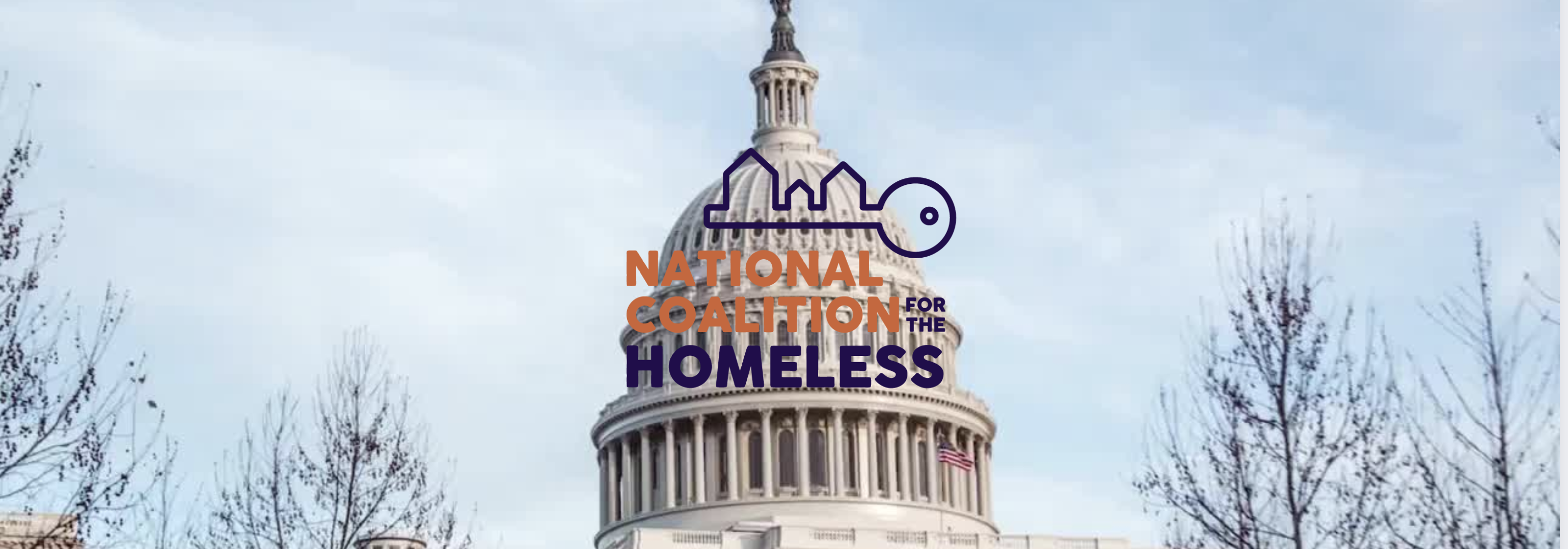I am entering my third year in my second tenure as Executive Director of the National Coalition for the Homeless, and I have great optimism.
My optimism is driven by the reality that the rest of the advocacy world and the federal agencies have finally caught up with NCH’s philosophy of involving people with lived experience at all levels. We have witnessed a transformation at all levels to an imperfect inclusiveness that holds great potential for a more efficient and effective service delivery system.
I am also profoundly moved by the advocacy in local communities to push back against a well-organized and well-funded group of lobbyists traveling the country spreading harmful misinformation using hedge fund dollars. The Cicero Institute is circulating model legislation to force people experiencing homelessness into jails and institutions. Study after study and voluminous research has disproved the theory that incarceration or forced institutionalization has any benefit for people experiencing homelessness. In fact, research on homelessness indicates that incarceration has multiple negative impacts.
Conversely, and as we experience a cold snap across the country, I am confronted with the harsh realities that people experiencing homelessness face daily. The headlines are nearly surreal.
The headlines in my news feed tell of a serial killer targeting people forced to live outdoors due to unregulated housing increases in Los Angeles. I have visited Skid Row multiple times, leaving with sadness and urgency.
In the same news feed, a community in Phoenix applauds the raiding of an encampment of 800 people. All 800 had been removed from the community’s safety to only God knows where. In my experience, only a handful are housed at the end of the day, and most are pushed to parts unknown.
People should be able to live in safe, stable housing, not parks, cars, or abandoned buildings.
For decades, we have waited for the market to fix our severe lack of affordable housing to no avail. We have begged, pleaded, and educated elected officials to exhaustion. Our mission to end homelessness can sometimes appear intractable.
But homelessness in the United States is not inevitable, or intractable, or hopeless. I fundamentally believe that for a full restoration of justice for marginalized people, we must demand it.
I believe the time is right for Direct Action. The homeless advocacy movement has been silent since the creation of McKinney Vento. People experiencing homelessness have relinquished leadership to providers, many of whom have compassion and good intentions but are beholden to funders, like HUD. People with lived experience have been exploited, tokenized, and devoid of any genuine voice in their own lives.
We must organize a force led by people with lived experience that demands housing justice, economic justice, and civil and racial justice.
We often hear nothing for us without us. This is a clever statement but hollow without a demand for this direction. We demand to be creators and not evaluators, and our expertise will be compensated.
This kind of organizing is not new. It has changed the course of history multiple times in multiple places worldwide, from American chattel Slavery to the abolishment of apartheid in South Africa. The intractable has been possible and then invisible.
I hope in reading this; you are overwhelmed with the fierce urgency of now that not one more person must die in the isolation of the sea of despair called homelessness. I know that many have moved on, not willing to relive the trauma of homelessness. However, we need your voice, your story, your triumph.
We need people to understand that your situation was not your destiny and that even though life dealt you a bad hand, you were satisfied. We need you to join the Bring America Home Now Campaign. We cannot afford to wait; people are dying everywhere in the richest countries in the world.
Authored by Donald Whitehead, Executive Director of NCH (National Coalition for the Homeless).
































